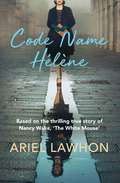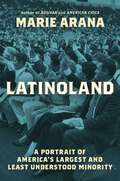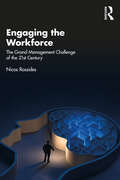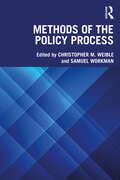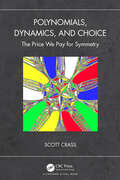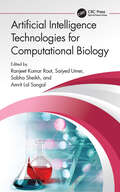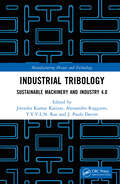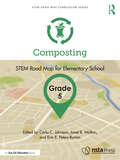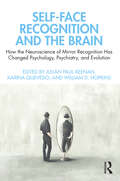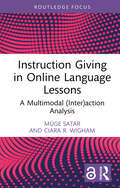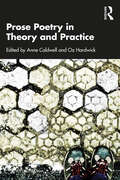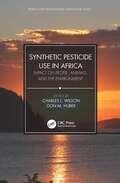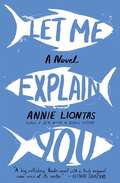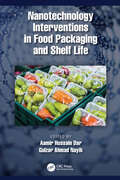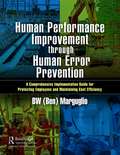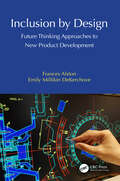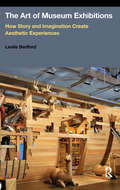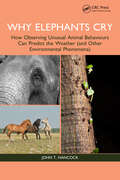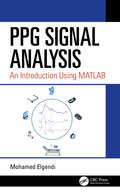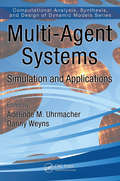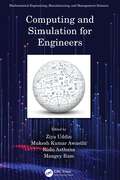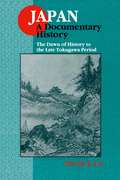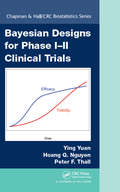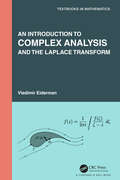- Table View
- List View
Code Name Hélène: Based on the thrilling true story of Nancy Wake, 'The White Mouse'
by Ariel LawhonA rollercoaster ride full of danger and intrigue based on the extraordinary true story of Australia&’s most beloved war heroine, Nancy Wake, now optioned for a television series starring Elizabeth Debicki. In 1936 intrepid young Australian journalist Nancy Wake is living in Paris after witnessing firsthand the terror of Hitler&’s rise in Europe, firing her resolve to join the fight to defeat the Nazis. When Nancy falls in love with a handsome French industrialist, no sooner has she become Mrs Henri Fiocca than the Germans invade and Nancy adopts another name, a codename – the first of many. As the elusive Lucienne Carlier she smuggles people across borders and earns the nickname &‘The White Mouse&’, along with a five million franc bounty on her head courtesy of the Gestapo. Forced to flee France for England, Nancy is trained by an elite espionage group under the codename Hélène. Finally, with mission in hand, she is airdropped back into France as the deadly Madame Andrée. But the closer to liberation France gets, the more exposed Nancy – and the people she loves – will become. Based on the true story of a woman who saved countless lives, Code Name Hélène is a thrilling tale of unfaltering courage, remarkable sacrifice – and love. &‘Magnificent ... Lawhon carries us into the heart of the French resistance [and] into the mind of a badass heroine with uncanny instincts who takes on the Nazis and men&’s arrogant sexism with uncommon bravado ... Propulsive ... Emotionally stirring... Even long after the last page is turned, this astonishing story of Wake&’s accomplishments will hold readers in its grip.&’ Booklist, starred review &‘Underground operative, charmer in red lipstick, loving wife and hard-hitting woman of her times, Nancy Wake will fascinate and thrill fans of fierce, brash, independent women, alike.&’Lisa Wingate, author of Before We Were Yours
Looking for Jane: A Novel
by Heather MarshallFor readers of Joanna Goodman and Genevieve Graham comes a masterful debut novel about three women whose lives are bound together by a long-lost letter, a mother&’s love, and a secret network of women fighting for the right to choose—inspired by true stories.Tell them you&’re looking for Jane. 2017 When Angela Creighton discovers a mysterious letter containing a life-shattering confession in a stack of forgotten mail, she is determined to find the intended recipient. Her search takes her back to the 1970s when a group of daring women operated an illegal underground abortion network in Toronto known only by its whispered code name: Jane... 1971 As a teenager, Dr. Evelyn Taylor was sent to a home for &“fallen&” women where she was forced to give up her baby for adoption—a trauma she has never recovered from. Despite harrowing police raids and the constant threat of arrest, she joins the Jane Network as an abortion provider, determined to give other women the choice she never had. 1980 After discovering a shocking secret about her family history, twenty-year-old Nancy Mitchell begins to question everything she has ever known. When she unexpectedly becomes pregnant, she feels like she has no one to turn to for help. Grappling with her decision, she locates &“Jane&” and finds a place of her own alongside Dr. Taylor within the network&’s ranks, but she can never escape the lies that haunt her. Weaving together the lives of three women, Looking for Jane is an unforgettable debut about the devastating consequences that come from a lack of choice—and the enduring power of a mother&’s love.
LatinoLand: A Portrait of America's Largest and Least Understood Minority
by Marie AranaA sweeping yet personal overview of the Latino population of America, drawn from hundreds of interviews and prodigious research that emphasizes the diversity and little-known history of our largest and fastest-growing minority.LatinoLand is an exceptional, all-encompassing overview of Hispanic America based on personal interviews, deep research, and Marie Arana&’s life experience as a Latina. At present, Latinos comprise 20 percent of the US population, a number that is growing. By 2050, census reports project that one in every three Americans will claim Latino heritage. But Latinos are not a monolith. They do not represent a single group. The largest numbers are Mexicans, Puerto Ricans, Dominicans, Salvadorans, and Cubans. Each has a different cultural and political background. Puerto Ricans, for example, are US citizens, whereas some Mexican Americans never immigrated because the US-Mexico border shifted after the US invasion of 1848, incorporating what is now the entire southwest of the United States. Cubans came in two great waves: those escaping communism in the early years of Castro, many of whom were professionals and wealthy, and those permitted to leave in the Mariel boat lift twenty years later, representing some of the poorest Cubans, including prisoners. As LatinoLand shows, Latinos were some of the earliest immigrants to what is now the US—some of them arriving in the 1500s. They are racially diverse—a random fusion of White, Black, Indigenous, and Asian. Once overwhelmingly Catholic, they are becoming increasingly Protestant and Evangelical. They range from domestic workers and day laborers to successful artists, corporate CEOs, and US senators. Formerly solidly Democratic, they now vote Republican in growing numbers. They are as varied culturally as any immigrants from Europe or Asia. Marie Arana draws on her own experience as the daughter of an American mother and Peruvian father who came to the US at age nine, straddling two worlds, as many Latinos do. LatinoLand unabashedly celebrates Latino resilience and character and shows us why we must understand the fastest-growing minority in America.
Engaging the Workforce: The Grand Management Challenge of the 21st Century
by Nicos RossidesGrounded in 25 years of research and practical experience, this book shows how to create engaging work environments and practices that harness employees’ energy and talents toward achieving organizational goals, while enhancing workers’ motivation and well-being.Creating and sustaining high functioning work environments lies at the core of management practice, and employee engagement is a key element in shaping these workplaces – and a significant challenge for business leaders. Academic researchers and practitioners have tackled the topic, but a chasm exists between these perspectives: academics tend to emphasize theory over problem-solving, while practitioners tend to rely on formulaic approaches and experience, rather than empirically tested theoretical frameworks. Thought leader, accomplished CEO, and organizational development consultant Nicos Rossides bridges this gap, exploring the complexity and fragmented nature of the academic literature and offering insight into practitioner approaches used by research and consulting organizations. He also presents his own conceptual framework that he has built over the years and is meant to be customized to specific organizational contexts.This insightful book will be of great interest to CEOs, board members and line managers across industries, as well as HR/OD practitioners and students, especially those who wish to learn how to apply time-tested intervention strategies to the workforce engagement challenge.
Methods of the Policy Process
by Christopher M. WeibleThe increasingly global study of policy processes faces challenges with scholars applying theories in radically different national and cultural contexts. Questions frequently arise about how to conduct policy process research comparatively and among this global community of scholars. Methods of the Policy Process is the first book to remedy this situation, not by establishing an orthodoxy or imposing upon the policy process community a rigid way of conducting research but, instead, by allowing the leading researchers in the different theoretical traditions a space to share the means by which they put their research into action. This edited volume serves as a companion volume and supplemental guide to the well-established Theories of the Policy Process, 4th Edition. Methods of the Policy Process acknowledges that growth and advancement in the study of the policy process is dependent not merely on conceptual and theoretical development, but also on developing and systematizing better methodological approaches to measurement and analysis. To maximize student engagement with the material, each chapter follows a similar framework: introduction of a given theory of the policy process, application of that theory (including best practices for research design, conceptualization, major data sources, data collection, and methodological approaches), critical assessment, future directions, and often online resources (including datasets, survey instruments, and interview and coding protocols). While the structure and focus of each chapter varies slightly according to the theoretical tradition being discussed, each chapter's central aim is to prepare readers to confidently undertake common methodological strategies themselves. Methods of the Policy Process is especially beneficial to people new to the field, including students enrolled in policy process courses, as well as those without access to formal training. For scholars experienced in applying theories, this edited volume is a helpful reference to clarify best practices in research methods.
Polynomials, Dynamics, and Choice: The Price We Pay for Symmetry
by Scott CrassWorking out solutions to polynomial equations is a mathematical problem that dates from antiquity. Galois developed a theory in which the obstacle to solving a polynomial equation is an associated collection of symmetries. Obtaining a root requires "breaking" that symmetry. When the degree of an equation is at least five, Galois Theory established that there is no formula for the solutions like those found in lower degree cases. However, this negative result doesn't mean that the practice of equation-solving ends. In a recent breakthrough, Doyle and McMullen devised a solution to the fifth-degree equation that uses geometry, algebra, and dynamics to exploit icosahedral symmetry.Polynomials, Dynamics, and Choice: The Price We Pay for Symmetry is organized in two parts, the first of which develops an account of polynomial symmetry that relies on considerations of algebra and geometry. The second explores beyond polynomials to spaces consisting of choices ranging from mundane decisions to evolutionary algorithms that search for optimal outcomes. The two algorithms in Part I provide frameworks that capture structural issues that can arise in deliberative settings. While decision-making has been approached in mathematical terms, the novelty here is in the use of equation-solving algorithms to illuminate such problems.Features Treats the topic—familiar to many—of solving polynomial equations in a way that’s dramatically different from what they saw in school Accessible to a general audience with limited mathematical background Abundant diagrams and graphics.
Artificial Intelligence Technologies for Computational Biology
by Ranjeet Kumar Rout Saiyed Umer Sabha Sheikh Amrit Lal SangalThis text emphasizes the importance of artificial intelligence techniques in the field of biological computation. It also discusses fundamental principles that can be applied beyond bio-inspired computing.It comprehensively covers important topics including data integration, data mining, machine learning, genetic algorithms, evolutionary computation, evolved neural networks, nature-inspired algorithms, and protein structure alignment. The text covers the application of evolutionary computations for fractal visualization of sequence data, artificial intelligence, and automatic image interpretation in modern biological systems.The text is primarily written for graduate students and academic researchers in areas of electrical engineering, electronics engineering, computer engineering, and computational biology.This book:• Covers algorithms in the fields of artificial intelligence, and machine learning useful in biological data analysis.• Discusses comprehensively artificial intelligence and automatic image interpretation in modern biological systems.• Presents the application of evolutionary computations for fractal visualization of sequence data.• Explores the use of genetic algorithms for pair-wise and multiple sequence alignments.• Examines the roles of efficient computational techniques in biology.
Industrial Tribology: Sustainable Machinery and Industry 4.0 (Manufacturing Design and Technology)
by Jitendra Kumar Katiyar Alessandro Ruggiero T.V.V.L.N. Rao J. Paulo DavimCovering energy-saving technologies and how these are incorporated into component design, this book is relevant to many industries, including automotive engineering, and discusses the topical issue of sustainability in industry. This book details recent fundamental developments in the field of tribology in industrial systems.Tribology has advanced significantly in recent years. Tribological performance depends on external parameters such as contact pressure at the interface, system temperature, relative speed between bodies and contact behaviour. Through ensuring that mechanisms work in an energy-efficient manner and minimizing wear, engineers should seek to implement the study of tribology to improve the life of machinery within industry. Essential to the study of component design and condition monitoring, the book touches upon topics such as gears, bearings and clutches. Additionally, it discusses tribology’s relation to Industry 4.0 and incorporates the results from cutting-edge research.Industrial Tribology: Sustainable Machinery and Industry 4.0 will be of interest to all engineers working in industry and involved in mechanical engineering, material engineering, mechanisms and component design and automotive engineering.
Composting, Grade 5: STEM Road Map for Elementary School (STEM Road Map Curriculum Series)
by Carla C. Johnson Janet B. Walton Erin E. Peters-BurtonWhat if you could challenge your fifth-grade students to investigate the role of composting in solid waste management? With this volume in the STEM Road Map Curriculum Series, you can! Composting outlines a journey that will steer your students toward authentic problem solving while grounding them in integrated STEM disciplines. Like the other volumes in the series, this book is designed to meet the growing need to infuse real-world learning into K–12 classrooms.This interdisciplinary, four-lesson module uses project- and problem-based learning to help students use the engineering design process (EDP) to design and create prototypes of compost systems and build a full-scale composting system for school use. Students will synthesize their learning about biotic and abiotic factors, decomposition, and engineering design as they learn about various types of compost systems, create their own portable compost bins, and create materials for a composting publicity campaign at their school.To support this goal, students will do the following: Identify and explain interdependent relationships in ecosystems Compare and contrast several ecosystems Describe how compost systems are designed and constructed and apply this understanding to creating prototypes of various compost systems Understand the concept of scale and apply this understanding to create scaled models of compost systems Apply their understanding of composting, compost systems, and the EDP to create a full-scale compost system for the school Measure various characteristics of compost The STEM Road Map Curriculum Series is anchored in the Next Generation Science Standards, the Common Core State Standards, and the Framework for 21st Century Learning. In-depth and flexible, Composting can be used as a whole unit or in part to meet the needs of districts, schools, and teachers who are charting a course toward an integrated STEM approach.
Self-Face Recognition and the Brain: How the Neuroscience of Mirror Recognition Has Changed Psychology, Psychiatry, and Evolution
by Julian Paul Keenan Karina Quevedo William D. HopkinsSelf-Face Recognition and the Brain explores a fundamental cornerstone of human consciousness; how recognizing ourselves leads to a better understanding of the brain and higher-order thinking.Featuring contributions from an interdisciplinary range of researchers, each chapter provides a unique insight into one aspect of self-face recognition. The book begins by introducing readers to the concept of self-face recognition, covering issues like the mirror-test and whether animals can recognize themselves, before addressing the role of neural correlates and attempts at localizing consciousness. It then discusses various disorders and the impact they can have on self-face recognition before considering how neuroscience can heighten our understanding of the field.It will be an essential read for all researchers of self-face recognition, from psychology, philosophy, and neuroscience backgrounds.
Instruction Giving in Online Language Lessons: A Multimodal (Inter)action Analysis (Routledge Focus on Applied Linguistics)
by Müge Satar Ciara R. WighamThis concise volume calls attention to the instruction-giving practices of language teachers in online environments, in particular videoconferencing, employing a Multimodal (Inter)action Analysis approach to explore the challenges, affordances, and pedagogical implications of teaching in these settings.The book examines the unique competences necessary for language teachers in multimodal synchronous online environments, which require mediating a mix of modes, including spoken language gaze, gesture, posture, and textual elements. Satar and Wigham’s innovative approach draws on Sigrid Norris’s work on Multimodal (Inter)action Analysis to examine variance in practices, combining in-depth micro-analytic analysis of mediation with a consideration of the modal density and complexity in the act of giving instructions. The volume shows how studying instruction giving can offer a better understanding of how online teachers mediate learning multimodally in electronic environments, but also research-informed guidance for practical implementation in the classroom.This book is a valuable resource for scholars in applied linguistics, language education, and language learning and teaching as well as practicing online language teachers.Full-size versions of all Figures, Extracts, and Tables are available in colour at https://doi.org/10.25405/data.ncl.20315142 Chapter 6 of this book is available for free in PDF format as Open Access from the individual product page at www.routledge.com. It has been made available under a Creative Commons Attribution-Non Commercial-No Derivatives 4.0 license.
Prose Poetry in Theory and Practice
by Anne CaldwellProse Poetry in Theory and Practice vigorously engages with the Why? and the How? of prose poetry, a form that is currently enjoying a surge in popularity. With contributions by both practitioners and academics, this volume seeks to explore how its distinctive properties guide both writer and reader, and to address why this form is so well suited to the early twenty-first century. With discussion of both classic and less well- known writers, the essays both illuminate prose poetry’s distinctive features and explore how this "outsider" form can offer a unique way of viewing and describing the uncertainties and instabilities which shape our identities and our relationships with our surroundings in the early twenty-first century. Combining insights on the theory and practice of prose poetry, Prose Poetry in Theory and Practice offers a timely and valuable contribution to the development of the form, and its appreciation amongst practitioners and scholars alike. Largely approached from a practitioner perspective, this collection provides vivid snapshots of contemporary debates within the prose poetry field while actively contributing to the poetics and craft of the form.
Synthetic Pesticide Use in Africa: Impact on People, Animals, and the Environment (World Food Preservation Center Book Series)
by Charles L. Wilson Don M. HuberA UN report presented to the UN Human Rights Council in 2017 recognized that, “although pesticide use has been correlated with a rise in food production, it has had catastrophic impacts" on human health and the environment. The report acknowledged that “increased food production has not succeeded in eliminating hunger worldwide because of the many interacting factors involved. Reliance on hazardous pesticides is a short-term solution that undermines the rights to adequate food and health for present and future generations."It is hoped that the knowledge available in Synthetic Pesticide Use in Africa: Impact on People, Animals, and the Environment will both enlighten the reader to present serious concerns on the use of synthetic pesticides, and motivate society to make the changes necessary for the sustainable production of safe, nutritious, and affordable food for the anticipated 9.6 billion inhabitants of this Earth in 2050. Key Features:• Explains the relationship of synthetic pesticides to escalating noncommunicable human and animal diseases in Africa and developing countries.• Discusses the impact of the herbicide glyphosate on the health of humans, animals, and the environment.• Reviews the disease causing mode of action of glyphosate and other synthetic pesticides on nutrient density and human and animal bodies.• Warns of the special vulnerability of children to synthetic pesticide toxicity.• Recommends needed legal initiatives to use synthetic pesticides more judiciously.The book is divided into seven (7) sections: I. General Impact, explains the general impact of synthetic pesticides on the African people, their animals, and environment. II. Human Health, covers the impact of synthetic pesticides on the human body, while III, Children’s Health, focuses on the special vulnerability of children to synthetic pesticides. IV. Animal Health describes the synthetic pesticide threats to animal production and sustainability. V. Environmental Health presents the threat of synthetic pesticides to soil microbiota and sustainable remediations. VI. Control Strategies discusses biologically-based alternatives to synthetic pesticides. Finally, VII. Reglatory Control presents some legal initiatives to combat the misuse of synthetic pesticides.
Let Me Explain You: A Novel
by Annie LiontasAn unforgettable novel about a Greek American family and its enigmatic patriarch from a significant new voice in contemporary literature. &“Hilarious yet rich…This debut by Annie Liontas will touch you&” (The New York Times).Stavros Stavros Mavrakis, Greek immigrant and proud owner of the Gala Diner, believes he has just ten days to live. As he prepares for his final hours, he sends a scathing email to his ex-wife and three grown daughters, outlining his wishes for how they each might better live their lives. With varying degrees of laughter and scorn, his family and friends dismiss his behavior as nothing more than a plea for attention, but when Stavros disappears, those closest to him are forced to confront the possibility of his death. A vibrant tour de force that races to a surprising conclusion, Let Me Explain You is told from multiple perspectives: Stavros Stavros, brimming with pride and cursing in broken English; his eldest daughter Stavroula, a talented chef in love with her boss’s daughter; her sister, the wounded but resilient Litza; and many other voices who compose a veritable Greek chorus. Funny yet deeply moving, this “pitch perfect” (San Francisco Chronicle) novel delivers a thoughtful meditation on the power of storytelling. In Let Me Explain You, Annie Liontas explores our origins and family myths, the relationship between fathers and daughters, the complex bond of sisterhood, hunger and what feeds us, but “the novel’s true heart is one filled with love and forgiveness” (Minneapolis Star-Tribune).
Nanotechnology Interventions in Food Packaging and Shelf Life
by Aamir Hussain DarNanotechnology has revolutionized agriculture and food technology, improving the shelf life of foods through interventions of nanomaterials in the packaging. Smart materials, biosensors, nanobiosenors, packaging materials, nanocarbon dots, and nanodevices address aspects of the food industry, such as food safety, food security, and packaging and shelf life.Nanotechnology Interventions in Food Packaging and Shelf Life shows how nanotechnology has the potential to transform food packaging materials in the future.Nanotechnology applied to food packaging can increase the shelf life of foods, minimize spoilage, ensure food safety, and repair damaged packaging. Key Features Sheds light on benefits of nanotechnology in the food packaging industry Contains information on utilization of nanocellulose and nanofibrils in food packaging Provides an overview of nanosensor applications for shelf-life extension of different food materials This book presents a comprehensive review of new innovations in nanotechnology, packaging, preservation, and processing of food and food products. It serves as a useful tool for food engineers and technologists in the food packaging industry.
Human Performance Improvement through Human Error Prevention: A Comprehensive Implementation Guide for Protecting Employees and Maintaining Cost Efficiency
by BW (Ben) MarguglioThis book is a simulation of a live course on human performance improvement/human error prevention (HPI/HEP) created by the preeminent authority on HPI/HEP. It presents the greatest breadth of scope and specificity on this topic. This book comprises a focused, challenging human error prevention training course designed to improve understanding of error causation. It will dramatically reduce human error and repeat deviations, and it digs below the surface of issues and looks to fix the real causes of human error and mistakes. In addition, this book presents a complete seminar from the thought leader acclaimed by hundreds of clients, and includes unique principles, practices, models, and templates. Information is comprehensive and can be directly implemented. The principles and practices of human error prevention are universally applicable regardless of the type of industrial, commercial, or governmental enterprise, and regardless of the type of function performed within the enterprise. The application of the information in this book will significantly contribute to improved productivity, safety, and quality. After fully using this book, you will understand: Human error prevention/reduction terminology and definitions. The relationships among culture, beliefs, values, attitudes, behavior, results, and performance. The roles of leadership in establishing and maintaining a quality/safety-conscious work environment. The one fundamental precept explaining the importance of human error prevention/reduction. The two most critical elements of human error prevention/reduction. The three levels of barriers to human error. The four types of things in which the barriers may exist at each barrier level. The five stages of human error. The six "M"s that can emit or receive hazards activated by human error. The seven universally applicable human error causal factors. The Rule of 8 by which to prevent human error and mitigate its effects. Techniques for making barriers effective and the spectrum of barrier effectiveness. The relationship of human error prevention/reduction to the total quality/safety function. Error-inducing conditions (error traps) and behaviors for counteracting these conditions. Non-conservative and conservative thought processes and behaviors in decision-making. Coaching for preventing the recurrence of human error. Root cause analysis techniques for identifying human error causal factors. The nine types of corrective action. Human error measurement. Strategies for a human error prevention/reduction initiative. How to design, implement, and manage a human error prevention/reduction initiative.
Inclusion by Design: Future Thinking Approaches to New Product Development
by Frances Alston Emily Millikin DeKerchoveThis book introduces a new speculative design process for inclusive new product development (NPD). The authors offer Vision Enabled Design Thinking (VEDT), a human-centered technological design framework incorporating the use of Design Lens and Vision Concepting, as a way for the designer to ideate and reflect on product development concepts within a deeper sociocultural context. The authors incorporate project management concepts into the overall design process through the development of a new design process, "4-D Algorithm for New Product Development." Inclusion by Design: Future Thinking Approaches to New Product Development formalizes the use of speculative design as a means for more inclusive NPD and promotes management of the design process as a needed skill for future engineers and designers. It provides a novel design methodology of VEDT for engaging vision concepting, through the use of Design Lenses in engaging speculative design practices and offers an implementation framework to support the sustainable adoption and use of future design methods. The 4-D Algorithm for New Product Development promotes inclusivity in design while addressing practical aspects of managing the design process in today’s corporate business environment. Those involved with interactive product and technology design, new product development, design researchers and managers, engineers, as well as professionals and graduate students will find this book useful.
The Art of Museum Exhibitions: How Story and Imagination Create Aesthetic Experiences
by Leslie BedfordLeslie Bedford, former director of the highly regarded Bank Street College museum leadership program, expands the museum professional’s vision of exhibitions beyond the simple goal of transmitting knowledge to the visitor. Her view of exhibitions as interactive, emotional, embodied, imaginative experiences opens a new vista for those designing them. Using examples both from her own work at the Boston Children’s Museum and from other institutions around the globe, Bedford offers the museum professional a bold new vision built around narrative, imagination, and aesthetics, merging the work of the educator with that of the artist. It is important reading for all museum professionals.
Why Elephants Cry: How Observing Unusual Animal Behaviours Can Predict the Weather (and Other Environmental Phenomena)
by John T. HancockWhy Elephants Cry is a fascinating frolic through the literature and evidence surrounding the use of unusual behavior of animals to measure and predict the environment. The role of animals, from the smallest ant to the biggest elephant, as predictors of environmental changes is framed around the climate crisis, which highlights the increasingly important part that animals will have to play in the future. Renowned biologist Professor John T. Hancock collects anecdotal stories and myths along with scientific evidence, demonstrating that observation of animals can be of tangible use. He looks at the measurement of the air temperature using ants, crickets and snakes, and goes on to assess the evidence that the observation of a wide range of animals can predict the weather or the imminent eruption of volcanoes and earthquakes. Evidence of animals being able to predict lunar and solar events, such as lunar cycles and the Northern Lights, is also considered. This is the only time that all this literature has been brought together in one place, a fascinating reference for anybody interested in animals and the environment. The book is also an ideal supplementary textbook for students studying animal behaviour.
PPG Signal Analysis: An Introduction Using MATLAB®
by Mohamed ElgendiThis book serves as a current resource for Photoplethysmogram (PPG) signal analysis using MATLAB®. This technology is critical in the evaluation of medical and diagnostic data utilized in mobile devices. Information and methodologies outlined in the text can be used to learn the empirical and experimental process (including data collection, data analysis, feature extractions, and more) from inception to conclusion. This book also discusses how introduced methodologies can be used and applied as tools that will teach the user how to validate, test, and simulate developed algorithms before implementing and deploying the algorithms on wearable, battery-driven, or point-of-care devices.
Multi-Agent Systems: Simulation and Applications (Computational Analysis, Synthesis, and Design of Dynamic Systems #Vol. 1)
by Adelinde M. Uhrmacher and Danny WeynsMethodological Guidelines for Modeling and Developing MAS-Based SimulationsThe intersection of agents, modeling, simulation, and application domains has been the subject of active research for over two decades. Although agents and simulation have been used effectively in a variety of application domains, much of the supporting research remains scattered in the literature, too often leaving scientists to develop multi-agent system (MAS) models and simulations from scratch. Multi-Agent Systems: Simulation and Applications provides an overdue review of the wide ranging facets of MAS simulation, including methodological and application-oriented guidelines. This comprehensive resource reviews two decades of research in the intersection of MAS, simulation, and different application domains. It provides scientists and developers with disciplined engineering approaches to modeling and developing MAS-based simulations. After providing an overview of the field’s history and its basic principles, as well as cataloging the various simulation engines for MAS, the book devotes three sections to current and emerging approaches and applications.Simulation for MAS — explains simulation support for agent decision making, the use of simulation for the design of self-organizing systems, the role of software architecture in simulating MAS, and the use of simulation for studying learning and stigmergic interaction.MAS for Simulation — discusses an agent-based framework for symbiotic simulation, the use of country databases and expert systems for agent-based modeling of social systems, crowd-behavior modeling, agent-based modeling and simulation of adult stem cells, and agents for traffic simulation. Tools — presents a number of representative platforms and tools for MAS and simulation, including Jason, James II, SeSAm, and RoboCup Rescue.Complete with over 200 figures and formulas, this reference book provides the necessary overview of experiences with MAS simulation and the tools needed to exploit simulation in MAS for future research in a vast array of applications including home security, computational systems biology, and traffic management.
Computing and Simulation for Engineers (ISSN)
by Ziya UddinThis book presents the reader with comprehensive insight into various kinds of mathematical modeling and numerical computation for problems arising in several branches of engineering, such as mechanical engineering, computer science engineering, electrical engineering, electronics and communication engineering, and civil engineering.The book: • Discusses topics related to clean and green energy production and storage • Bridges the gap between core theory and costly industrial experiments • Covers advanced biomechanics and nanodrug delivery topics • Explores diversified applications of mathematical techniques to solve practical engineering problems The text in this book emphasizes mathematical treatment of soft computing, image and signal processing, fluid flows in various geometries, biomechanics, biological modeling, a mathematical description of the solar cell, analytical and numerical treatment of problems in fracture mechanics, and antenna design modeling. It also discusses the numerical computations of biomechanics problems and problems arising in cryptography. The text further covers optimization techniques that are useful for real-world problems. This material is primarily written for graduate students and academic researchers in a number of engineering fields, including electrical, electronics and communication, industrial, manufacturing, mechanical, computer science, and mathematics.
Japan: A Documentary History
by David J. LuAn updated edition of David Lu's acclaimed "Sources of Japanese History", this two volume book presents in a student-friendly format original Japanese documents from Japan's mythological beginnings through 1995. Covering the full spectrum of political, economic, diplomatic as well as cultural and intellectual history, this classroom resource offers insight not only into the past but also into Japan's contemporary civilisation. This volume covers up to the late 18th century. Three major criteria used in the document selection were that: the selection avoids duplication with other collections - 75% of the documents presented here are newly translated; a document accurately reflects the spirit of the times and the life-styles of the people; and emphasis is on the development of social, economic and political institutions.
Bayesian Designs for Phase I-II Clinical Trials (Chapman & Hall/CRC Biostatistics Series #92)
by Ying Yuan Hoang Q. Nguyen Peter F. ThallReliably optimizing a new treatment in humans is a critical first step in clinical evaluation since choosing a suboptimal dose or schedule may lead to failure in later trials. At the same time, if promising preclinical results do not translate into a real treatment advance, it is important to determine this quickly and terminate the clinical evaluation process to avoid wasting resources. Bayesian Designs for Phase I–II Clinical Trials describes how phase I–II designs can serve as a bridge or protective barrier between preclinical studies and large confirmatory clinical trials. It illustrates many of the severe drawbacks with conventional methods used for early-phase clinical trials and presents numerous Bayesian designs for human clinical trials of new experimental treatment regimes.Written by research leaders from the University of Texas MD Anderson Cancer Center, this book shows how Bayesian designs for early-phase clinical trials can explore, refine, and optimize new experimental treatments. It emphasizes the importance of basing decisions on both efficacy and toxicity.
An Introduction to Complex Analysis and the Laplace Transform (Textbooks in Mathematics)
by Vladimir EidermanThe aim of this comparatively short textbook is a sufficiently full exposition of the fundamentals of the theory of functions of a complex variable to prepare the student for various applications. Several important applications in physics and engineering are considered in the book.This thorough presentation includes all theorems (with a few exceptions) presented with proofs. No previous exposure to complex numbers is assumed. The textbook can be used in one-semester or two-semester courses.In one respect this book is larger than usual, namely in the number of detailed solutions of typical problems. This, together with various problems, makes the book useful both for self- study and for the instructor as well.A specific point of the book is the inclusion of the Laplace transform. These two topics are closely related. Concepts in complex analysis are needed to formulate and prove basic theorems in Laplace transforms, such as the inverse Laplace transform formula. Methods of complex analysis provide solutions for problems involving Laplace transforms.Complex numbers lend clarity and completion to some areas of classical analysis. These numbers found important applications not only in the mathematical theory, but in the mathematical descriptions of processes in physics and engineering.
